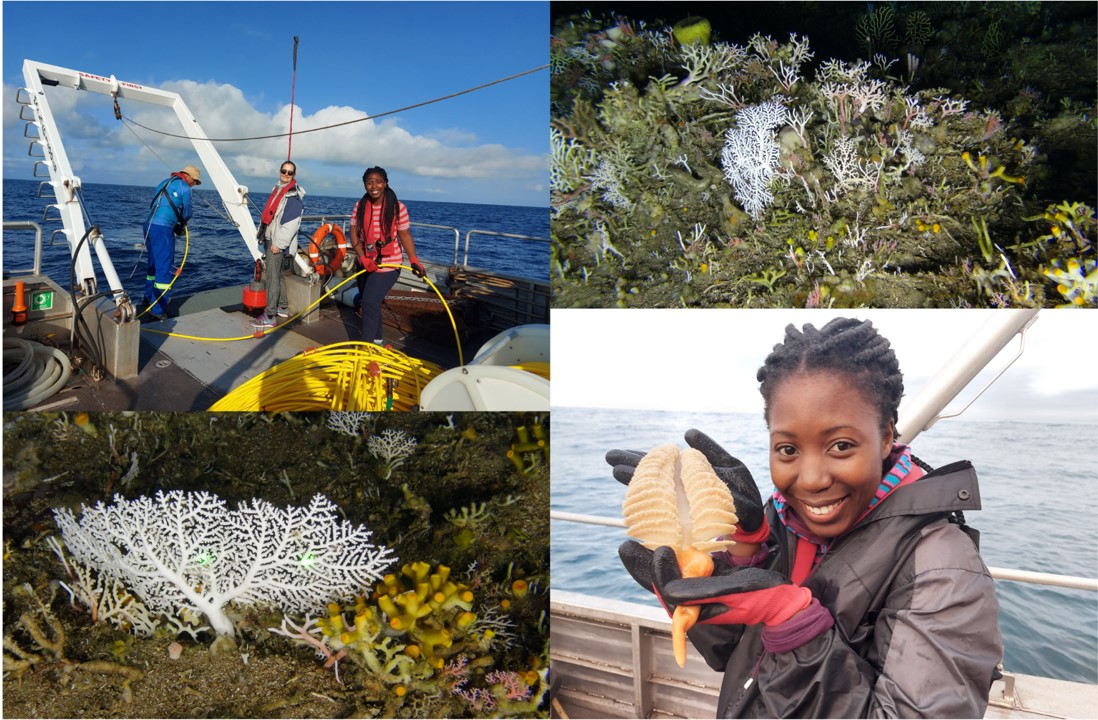[From Deep-Sea Life 17]
Kerry Sink (1,2), Sinothando Shibe (3) and Ryan Palmer (4,5)
(1) South African National Biodiversity Institute (SANBI); (2) Institute for Coastal and Marine Research, Nelson Mandela University; (3) University of kwaZulu Natal; (4) South African Institute for Aquatic Biodiversity; (5) African Coelacanth Ecosystem Programme
In Zulu and Xhosa culture, ancestors are considered to reside in the ocean with many people believing that the oldest and most powerful ancestors live in the deep sea. Before entering this sacred space, it is customary to present silver coins as a token of respect and remembrance and in making special requests. On the morning of 24th May, on the recent Deep Forests expedition working off East London and Gqeberha on the southeastern margin of South Africa, the team paid their respects before deploying the Remotely Operated Vehicle (ROV) into the depths. The team were amazed to descend on an exquisite field of lace coral at 220m with dense aggregations of enormous Polyprion wreckfish. A four-hour dive recorded the various taxa of stylasterine and dendrophyllid corals between 220m and 120m culminating in the first collections of the violet Stylaster, the snowflake stylaster, and the dominant scleractinian stony coral. These collections represent the first collections of stylasterine corals by ROV in South Africa and open the way for integrated taxonomy and potential new work on climate vulnerability and change. The team also achieved the maximum depth for the ACEP ROV at 300m in the Gxulu Canyon and the continental slope off East London, signaling the need to expand research into deeper water. Technical constraints are a major limitation to deep-sea research efforts in developing countries. The ACEP ROV is an inspection class ROV and standardized transects cannot be conducted in the strong Agulhas current. Nevertheless, the team collected valuable imagery for the classification and mapping of benthic ecosystem types, reference images to support atlas efforts and specimens to support taxonomic work and barcoding that will be used to link reference images to accurate identities for atlasing marine invertebrates. Finally, the Deep Forest team collected new data to support the mapping and management of Vulnerable Marine Ecosystems and, together with post-doctoral researcher Otto Whitehead funded through the UKRI One Ocean Hub, released a short video in collaboration with spoken work artist Kro-Bars on World Ocean Day. The video aims to inspire fishers to help map and manage VMEs.
Watch it on youtube https://www.youtube.com/watch?v=n6kdnR2eXmg


